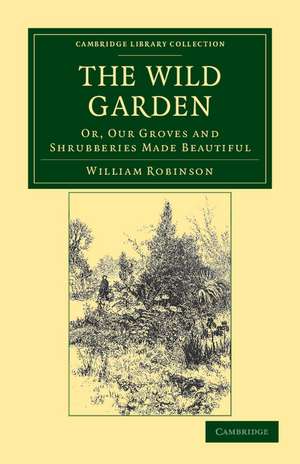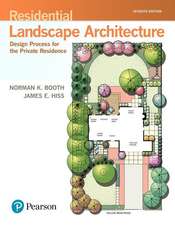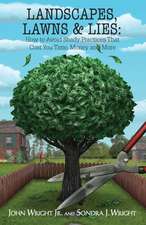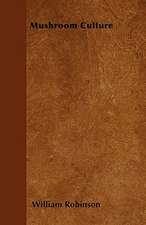The Wild Garden: Or, Our Groves and Shrubberies Made Beautiful: Cambridge Library Collection - Botany and Horticulture
Autor William Robinsonen Limba Engleză Paperback – 23 noi 2011
| Toate formatele și edițiile | Preț | Express |
|---|---|---|
| Paperback (4) | 139.03 lei 3-5 săpt. | +18.70 lei 4-10 zile |
| Creative Media Partners, LLC – 26 oct 2022 | 139.03 lei 3-5 săpt. | +18.70 lei 4-10 zile |
| Hansebooks – 5 aug 2018 | 244.87 lei 3-5 săpt. | |
| Kessinger Publishing – 10 dec 2008 | 241.85 lei 38-44 zile | |
| Cambridge University Press – 23 noi 2011 | 279.95 lei 6-8 săpt. | |
| Hardback (1) | 166.69 lei 3-5 săpt. | +95.39 lei 4-10 zile |
| Timber Press (OR) – 31 oct 2009 | 166.69 lei 3-5 săpt. | +95.39 lei 4-10 zile |
Din seria Cambridge Library Collection - Botany and Horticulture
- 19%
 Preț: 532.70 lei
Preț: 532.70 lei -
 Preț: 275.27 lei
Preț: 275.27 lei -
 Preț: 324.90 lei
Preț: 324.90 lei -
 Preț: 220.53 lei
Preț: 220.53 lei - 8%
 Preț: 387.28 lei
Preț: 387.28 lei -
 Preț: 419.51 lei
Preț: 419.51 lei - 19%
 Preț: 592.62 lei
Preț: 592.62 lei -
 Preț: 277.84 lei
Preț: 277.84 lei -
 Preț: 323.80 lei
Preț: 323.80 lei -
 Preț: 263.83 lei
Preț: 263.83 lei -
 Preț: 465.60 lei
Preț: 465.60 lei -
 Preț: 252.80 lei
Preț: 252.80 lei -
 Preț: 366.95 lei
Preț: 366.95 lei -
 Preț: 329.40 lei
Preț: 329.40 lei -
 Preț: 246.16 lei
Preț: 246.16 lei -
 Preț: 528.41 lei
Preț: 528.41 lei -
 Preț: 422.16 lei
Preț: 422.16 lei -
 Preț: 333.81 lei
Preț: 333.81 lei -
 Preț: 252.80 lei
Preț: 252.80 lei -
 Preț: 276.31 lei
Preț: 276.31 lei - 19%
 Preț: 475.84 lei
Preț: 475.84 lei -
 Preț: 419.66 lei
Preț: 419.66 lei - 19%
 Preț: 509.29 lei
Preț: 509.29 lei -
 Preț: 336.91 lei
Preț: 336.91 lei -
 Preț: 531.37 lei
Preț: 531.37 lei -
 Preț: 257.69 lei
Preț: 257.69 lei -
 Preț: 278.81 lei
Preț: 278.81 lei -
 Preț: 244.80 lei
Preț: 244.80 lei -
 Preț: 443.96 lei
Preț: 443.96 lei -
 Preț: 328.64 lei
Preț: 328.64 lei - 19%
 Preț: 436.34 lei
Preț: 436.34 lei -
 Preț: 419.08 lei
Preț: 419.08 lei -
 Preț: 448.59 lei
Preț: 448.59 lei -
 Preț: 368.30 lei
Preț: 368.30 lei -
 Preț: 417.75 lei
Preț: 417.75 lei
Preț: 279.95 lei
Nou
Puncte Express: 420
Preț estimativ în valută:
53.59€ • 58.23$ • 45.04£
53.59€ • 58.23$ • 45.04£
Carte tipărită la comandă
Livrare economică 21 aprilie-05 mai
Preluare comenzi: 021 569.72.76
Specificații
ISBN-13: 9781108037105
ISBN-10: 1108037100
Pagini: 250
Ilustrații: 1 b/w illus.
Dimensiuni: 140 x 216 x 14 mm
Greutate: 0.32 kg
Editura: Cambridge University Press
Colecția Cambridge University Press
Seria Cambridge Library Collection - Botany and Horticulture
Locul publicării:Cambridge, United Kingdom
ISBN-10: 1108037100
Pagini: 250
Ilustrații: 1 b/w illus.
Dimensiuni: 140 x 216 x 14 mm
Greutate: 0.32 kg
Editura: Cambridge University Press
Colecția Cambridge University Press
Seria Cambridge Library Collection - Botany and Horticulture
Locul publicării:Cambridge, United Kingdom
Cuprins
1. Explanatory; 2. An enumeration of hardy exotic plants, suitable for naturalization in our woods, semi-wild places, shrubberies, etc., with the native country, general character, height, colour, time of flowering, mode of propagation, and the positions most suitable for each; 3. Selections of hardy exotic plants for naturalization in various positions; 4. The garden of British wild flowers.
Descriere
Influential horticulturalist William Robinson called for a more natural English style of garden design in this 1870 book.
Textul de pe ultima copertă
"Rick Darke captures in text and brilliant photography the essence of Robinson's philosophy, now practiced virtually worldwide." --Peter Herbert, consultant and former proprietor of Gravetye Manor
"Rick Darke has done a great service to all gardeners in showing how Robinson's nineteenth-century classic is alive and relevant to us and our time." --Noel Kinsbury, garden designer, author, lecturerWilliam Robinson's revolutionary book, The Wild Garden, envisioned an authentically naturalistic approach to gardening that is more vital today than ever before. First published in 1870, The Wild Garden evolved through many editions and remained in print through the remainder of the author's lifetime (1838-1935). In the book, Robinson issued a forceful challenge to the prevailing style of the day, which relied upon tender plants arranged in rigidly geometrical designs. In sharp contrast, Robinson advocated for the use of hardy, locally adapted native and exotic plants arranged according to local growing conditions. Robinson's vision was inspired by his first-hand observations of natural habitats in Europe and North America, and he put his ideas into practice in his own garden at Gravetye Manor in West Sussex. The Wild Garden was ground-breaking and hugely influential in its day, and is stunningly relevant to twenty-first century gardeners and landscape stewards seeking to adopt sustainable design and management practices.
In addition to the complete original text and illustrations from the fifth edition of 1895, this expanded edition includes new chapters and 125 color photographs by award-winning photographer and landscape consultant Rick Darke. His new material places wild gardening in modern context, underscoring Robinson's importance in the evolution of ecological design and illustrating an inspiring diversity of contemporary wild gardens.
Notă biografică
Rick Darke is a landscape design consultant, author, lecturer, and photographer based in Pennsylvania who blends art, ecology, and cultural geography in the creation and conservation of livable landscapes. His projects include scenic byways, public gardens, corporate and collegiate campuses, mixed-use conservation developments, and residential gardens. Darke served on the staff of Longwood Gardens for twenty years and received the Scientific Award of the American Horticultural Society. His work has been featured in the New York Times and on National Public Radio. Darke is recognized as one of the world's experts on grasses and their use in public and private landscapes. For further information visit www.rickdarke.com.William Robinson (1838-1935) emigrated from Ireland at a young age and was rapidly welcomed into the top echelons of British horticulture and botany. By 1866 he was a Fellow in the Linnean Society, sponsored by his friend Charles Darwin. Already an expert on the flora of the British Isles, he traveled the breadth of North America by train in 1870, observing regional habitats and forging lasting connections with Charles Sargent, Asa Gray, Frederick Law Olmsted, and others of their stature. Robinson was just thirty-two when he first published The Wild Garden, which has proved to be the most insightful, influential, and enduring of his many books and journals. Robinson's brilliance and enormous personal energy enabled him to become one of the most accomplished gardeners, editors, and publishers of his era, and he is often referred to as the Father of the English Flower Garden. Gravetye Manor, a sixteenth-century house which survives on over one-thousand acres in West Sussex, became his home and laboratory for developing and refining the wild garden concept.









